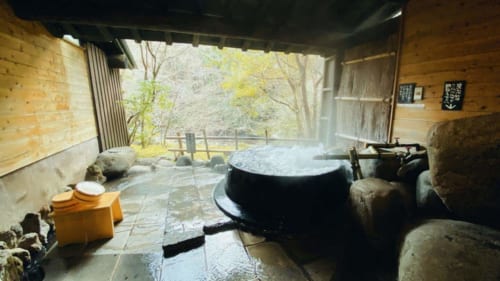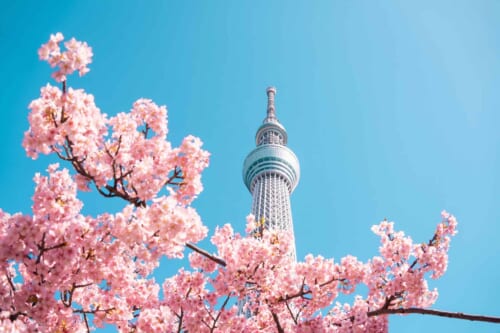Is it really necessary to know how to speak Japanese when you visit Japan? The short answer is no. Japanese people are famously patient with visitors who don’t speak their language, but learning a few basic words and phrases can help make your visit to Japan even more pleasant. Although Japanese people will do their best to understand you in your mother language, they also greatly appreciate any effort you make to learn to speak in Japanese.

Voyapon has created many articles to teach you not only the words but the culture behind the language. This will help you understand why it is considered impolite to address another person as “you” and why there are so many ways to say “I’m sorry”.
Japanese Pronunciation Is Easy!
Most of the sounds used in Japanese are similar to those used in English, so there aren’t any verbal gymnastics that you need to learn to speak Japanese. As with everything, practice makes perfect, so repeat those key words and phrases until they sound natural.
Japanese Vowel Sounds
Unlike English, vowel sounds in Japanese are always pronounced the same way, so once you learn basic pronunciation, you can say anything. In fact, the vowels follow similar rules to Spanish vowels:
- A あ as in “father”
- I い as in “seem”
- U う as in “soup”
- E え as in “red”
- O お as in “nope”
Notice the order of the vowels is not in alphabetical order; this is the standard order for Japanese which does not rely on the alphabet.
Unlike Chinese, there is only one tone for Japanese, which is neither rising nor falling. The only catch is that vowel sounds can be “doubled” to create an elongated vowel. This elongation is usually written with a “u” after the doubled vowel. This can change the meaning of words:
sato (village, 里, さと) vs. satou (sugar, 砂糖, さとう)
Japanese Consonant Sounds
Consonant sounds are generally hard, though there are some exceptions, which are easy to pronounce when you see them:
Ka か, Ki き, Ku く, Ke け, Ko こ
Sa さ, SHI し, Su す, Se せ, So そ (Notice that “si” is actually “shi”)
Ta た, CHI ち, TSU つ, Te て, To と (Note that “chi” and “tsu” are the pronunciations for “ti” and “tu”)
Na な, Ni に, Nu ぬ, Ne ね, No の
Ha は, Hi ひ, FU ふ, He へ, Ho ほ (“Fu” and “Hu” are basically pronounced the same way but you will mainly see it written as “Fu”)
Ma ま, Mi み, Mu む, Me め, Mo も
Ya や, Yu ゆ, Yo よ (There are only 3 sounds starting with “Y”)
Ra ら, Ri り, Ru る, Re れ, Ro ろ (The “R” sound in Japanese is the most difficult for English speakers. It’s a bit softer, somewhere between an “R” and an “L”)
Wa わ, Wo を (There are only 2 sounds starting with “W”)
N ん (This sound is added to the end of other sounds, making mo も into mon もん for example.)
There are other sounds that follow the same patterns, but as you can see, there is generally nothing too difficult for English speakers to pronounce. But once you learn the basic pronunciation, you’ll realize the proper way to say karate is not Ka-rot-tee, and karaoke is not Carry-okee!
How To Greet People in Japanese
A friendly greeting is a way to acknowledge another person’s presence and just like almost anywhere else in the world, it’s considered a friendly way to greet strangers. Used with a smile, it’s an easy way to break the ice with Japanese people, even if all you get in return is a greeting and a smile.

The proper greeting depends on the time of day, just like “Good morning,” (おはようございます, Ohayou gozaimasu) “Good Afternoon” (こんにちは, Konnichiwa) or “Good Evening” (こんばんは, Konbanwa) but otherwise, there are no special rules to follow. You might want to combine your greeting with a polite bow, though bowing is not expected from foreign visitors to Japan, so a Japanese person might be delighted to see you try this. You might want to add a “Nice to meet you” (はじめまして, Hajimemashite or よろしくお願いします, Yoroshiku onegai shimasu) for people you will be in a longer relationship with.
There are many ways to say goodbye depending on the situation so you can consult our article for more details. However, if you are not planning to see the person again, the standard “Sayounara” (さようなら) is always a good choice.
How To Say Thank You in Japanese

Expressing appreciation is an integral part of Japanese culture, so it is no wonder there are many ways to say thank you. For most situations, the standard “doumo arigatou” (どうもありがとう) works, but there are times when more formal forms of appreciation are in order.
Apologizing in Japanese

Like saying thanks, saying sorry is also an essential part of Japanese culture. The root of both appreciating and apologizing to others is humility, which is seen as an important virtue in people. Again, you will find countless ways to apologize in Japanese, but the most useful phrase is “sumimasen” (すみません) which can be used for “I’m sorry”, “Excuse me,” or even “Hello”!
Unique Japanese Phrases and How To Use Them
Besides the standard phrases people use to communicate with others in various languages, Japanese has some unique phrases that are a little more difficult to explain and learn how to use.

“Otsukaresama” (お疲れさま) is a phrase that is often exchanged by Japanese people, especially among co-workers, but you can also learn how to use this extremely useful phrase as a greeting or to express appreciation for someone’s effort.

Meals in Japan are begun and ended with the phrases “Itadakimasu” (いただきます) and “Gochisousama deshita” (ごちそうさまでした) respectively. While “Itadakimasu” is often explained as a way to give thanks for the food, it is much deeper in meaning. In any case, using these phrases will help you show your appreciation to the chefs and service staff of restaurants you eat in, as well as friends who might provide you with a meal during your trip.
Resources For Learning Japanese
Voyapon has many articles about learning simple Japanese that are essential for travelers in Japan. But we believe that is important not just to know the words and pronunciation, but some of the context behind them.
Remember, learning Japanese is not just words and phrases, but understanding the cultural context behind the language. If you understand not just how to say things but why the Japanese say certain things, you’ll have a much deeper experience during your trip to Japan and minimize the amount of culture shock you feel while you are here.











No Comments yet!